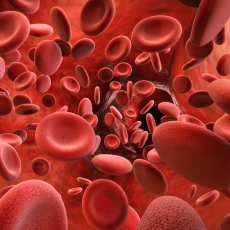
Hemochromatosis
Also called: Iron overload disease
New on the MedlinePlus Hemochromatosis page:
05/01/2018 03:50 PM EDT
Source: National Library of Medicine - 

MEDICAL ENCYCLOPEDIA
National Institutes of Health
Hemochromatosis is a disease in which too much iron builds up in your body. Your body needs iron but too much of it is toxic. If you have hemochromatosis, you absorb more iron than you need. Your body has no natural way to get rid of the extra iron. It stores it in body tissues, especially the liver, heart, and pancreas. The extra iron can damage your organs. Without treatment, it can cause your organs to fail.
There are two types of hemochromatosis. Primary hemochromatosis is an inherited disease. Secondary hemochromatosis is usually the result of something else, such as anemia, thalassemia, liver disease, or blood transfusions.
Many symptoms of hemochromatosis are similar to those of other diseases. Not everyone has symptoms. If you do, you may have joint pain, fatigue, general weakness, weight loss, and stomach pain.
Your doctor will diagnose hemochromatosis based on your medical and family histories, a physical exam, and the results from tests and procedures. Treatments include removing blood (and iron) from your body, medicines, and changes in your diet.
NIH: National Heart, Lung, and Blood Institute
- Ferritin Blood Test
 (National Library of Medicine)Also in Spanish
(National Library of Medicine)Also in Spanish - Iron Test (American Association for Clinical Chemistry)
- Liver Function Tests: MedlinePlus Health Topic
 (National Library of Medicine)Also in Spanish
(National Library of Medicine)Also in Spanish - TIBC, UIBC and Transferrin (American Association for Clinical Chemistry)
- Iron Chelation (Aplastic Anemia & MDS International Foundation)
- Genetics Home Reference: hereditary hemochromatosis
 (National Library of Medicine)
(National Library of Medicine) - Learning about Hereditary Hemochromatosis
 (National Human Genome Research Institute)
(National Human Genome Research Institute)
- What Is Hemochromatosis? (Dolan DNA Learning Center)
- ClinicalTrials.gov: Hemochromatosis
 (National Institutes of Health)
(National Institutes of Health)
- Article: Common founder effects of hereditary hemochromatosis, Wilson´s disease, the long...
- Article: Genetic hemochromatosis: Pathophysiology, diagnostic and therapeutic management.
- Article: The mechanisms of systemic iron homeostasis and etiology, diagnosis, and...
- Hemochromatosis -- see more articles
- Hereditary Hemochromatosis (For Parents) (Nemours Foundation)
- Ferritin blood test (Medical Encyclopedia)Also in Spanish
- Hemochromatosis (Medical Encyclopedia)Also in Spanish
- Hemochromatosis
 (National Institute of Diabetes and Digestive and Kidney Diseases)
(National Institute of Diabetes and Digestive and Kidney Diseases) - Serum iron test (Medical Encyclopedia)Also in Spanish





















.png)












No hay comentarios:
Publicar un comentario